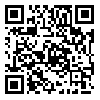BibTeX | RIS | EndNote | Medlars | ProCite | Reference Manager | RefWorks
Send citation to:
URL: http://sjsph.tums.ac.ir/article-1-50-en.html

 , Farah Sadat Bahreini *
, Farah Sadat Bahreini * 
 1, Monir Baradaran Eftekhar
1, Monir Baradaran Eftekhar 
 , Mostafa Ghanei
, Mostafa Ghanei 
 , Amene setareh Forouzan
, Amene setareh Forouzan 
 , Mehdi Farahani
, Mehdi Farahani 

Background and Aim: Priority setting is one of the most important issues in health research systems. No national health system can afford to finance all research projects proposed by researchers, especially in developing countries. Therefore, we decided to set the main national health research priorities in Iran using the Essential National Health Research (ENHR) method.
Materials and Methods: All of the Iranian universities of medical sciences and other stakeholders collaborated in this study. The methodology for research priority setting was based on needs assessment and ENHR.
Results: The total number of research priorities gathered from universities of medical sciences was 6723. The proportions of topics related to basic science, applied and development subjects were 17%, 78% and 5%, respectively. Further analysis of the data showed that almost half (46.3%) of the research priorities were descriptive, 36.0% analytical, and 17.6% interventional. The research priorities were divided into 9 main areas, namely, communicable diseases, noncommunicable diseases, health system research, pharmaceutical sciences and industrial pharmacy, basic science, traditional and herbal medicine, nutrition, environmental health, and dentistry.
Conclusion: Up to now the common procedure for research priority setting has been, with a top-to-bottom approach, managed by a limited number of researchers and experts, while in the method presented in this paper a bottom-to-top approach is used, which is more effective.
Received: 2011/02/5 | Accepted: 2011/06/21 | Published: 2013/08/9
| Rights and permissions | |
 |
This work is licensed under a Creative Commons Attribution-NonCommercial 4.0 International License. |



